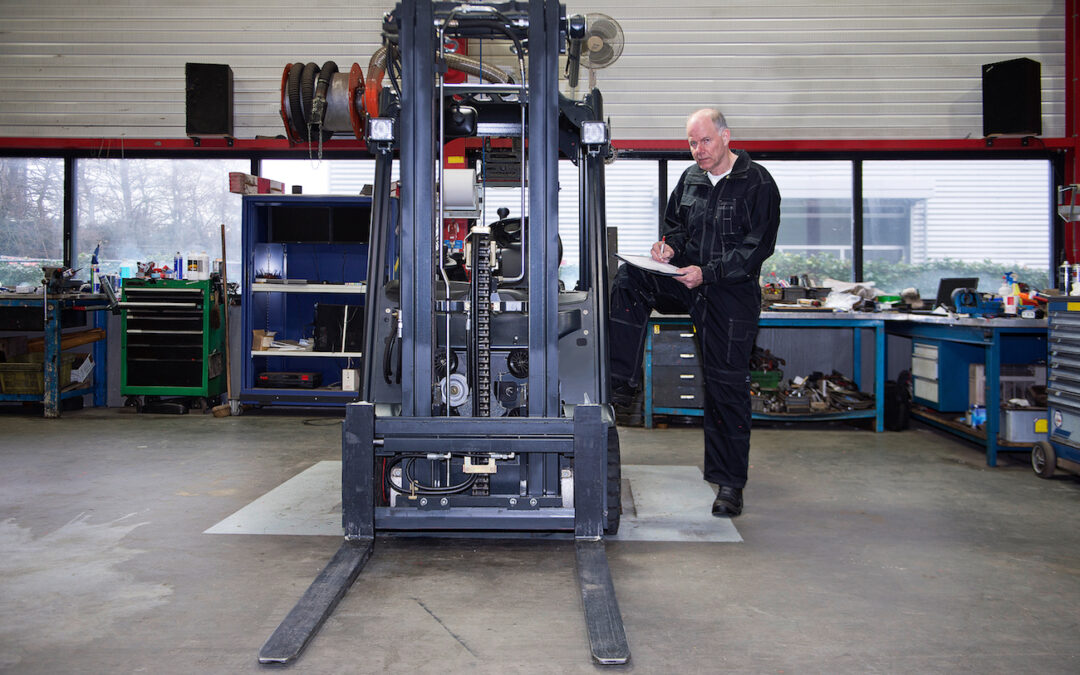To maintain your Powered Industrial Truck, OSHA requires a complete inspection on a daily basis, before it is placed into service. Forklifts used on a round-the-clock basis, must be examined before and after each shift. If any defects are found during the inspection, the problems must be recorded and reported immediately to your supervisor so they can be corrected, and the forklift must be removed from service until repairs have been made.
Discussion Points:
• How to Inspect the Forklift?
• Key-Off; Pre-Operational Inspection
• Key-On; Pre-Operational Inspection
Discussion:
Pre-Operational Inspections can be divided into two sections, key-off items and key-on items. Key-off items include all items before the engine is started which include: the mast, roller tracks and chains, forks and adjustment, fluid levels, hydraulic lines, lift and tilt cylinders, overhead guard mounting, fire extinguisher, cylinder mounting hardware, tires, lights and warning devices, parking brake, steering and brakes, driving controls, lift controls, seat adjustment and belts. After completing the Key-off items check, enter the forklift using the “3 Point Contact” method and put on the seatbelt, checking it for proper fit and damage that may cause failure. Turn the engine on and check all gauges, then lift the carriage to maximum height, then lower it back down, tilt the mast to full-forward and return it to its normal position, turn the steering wheel in both directions, test the horn and turn on and off the lights, listening for any unusual sounds and watching for any abnormality that would indicate a problem. Test the brakes by traveling a short distance forward and stop, then backward and stop. Test the parking brake, control levers, backup alarm while traveling backwards, and the mirrors. If any defects are noted, the Forklift must be removed from service until repairs have been made, and report to supervisor immediately so equipment defects can be corrected.
As always, be safe out there!


Recent Comments